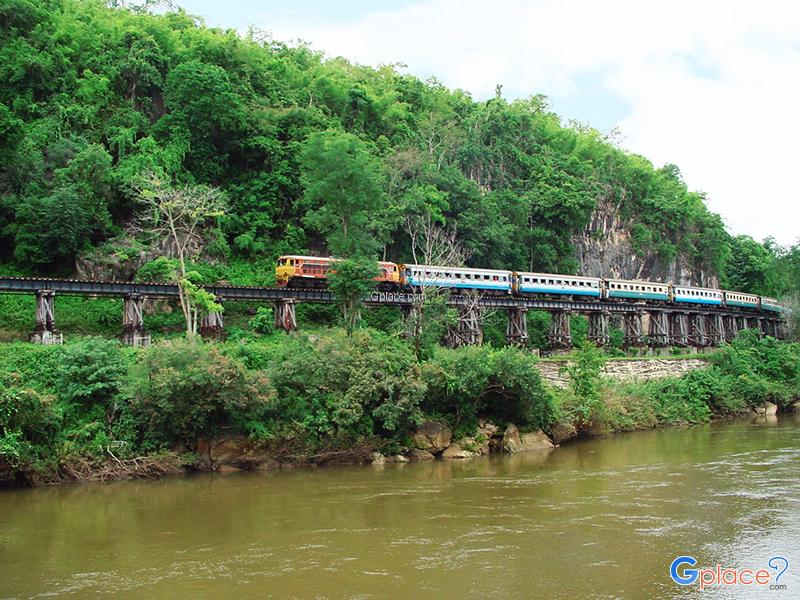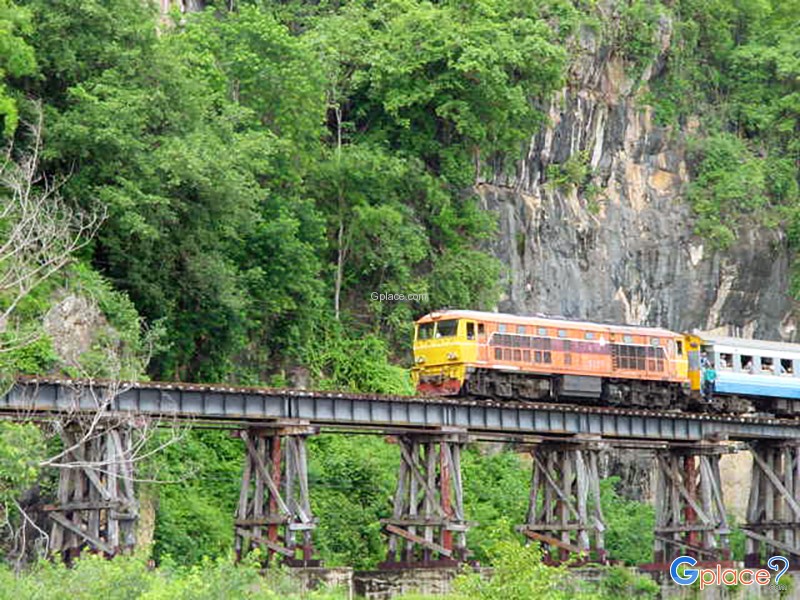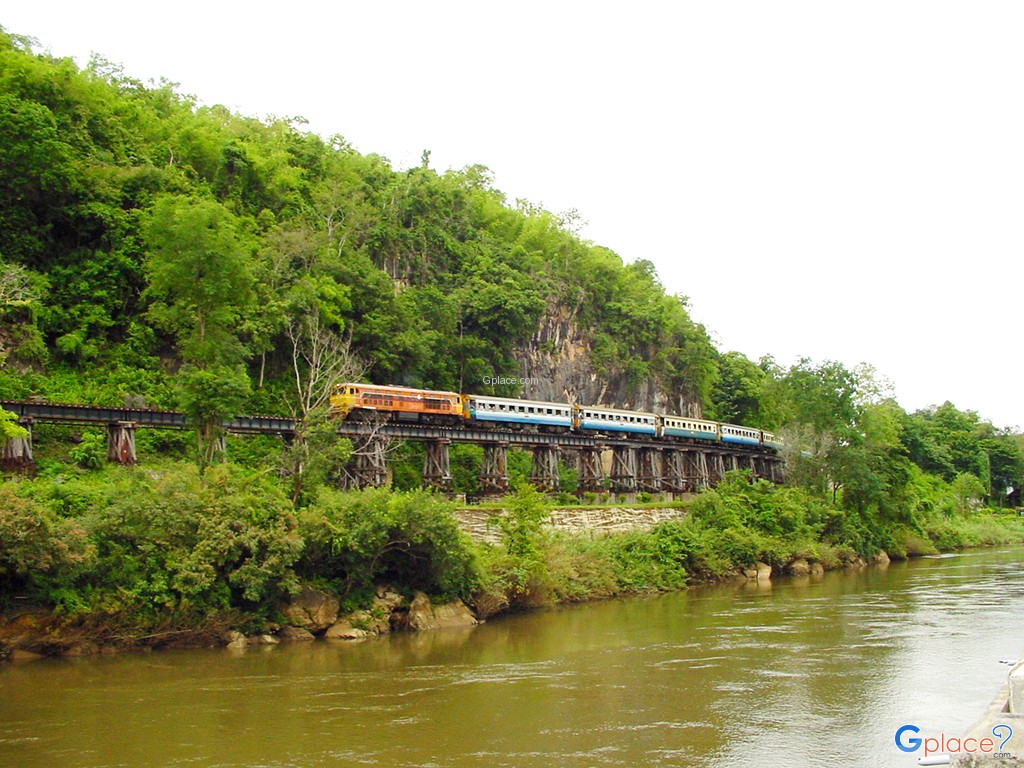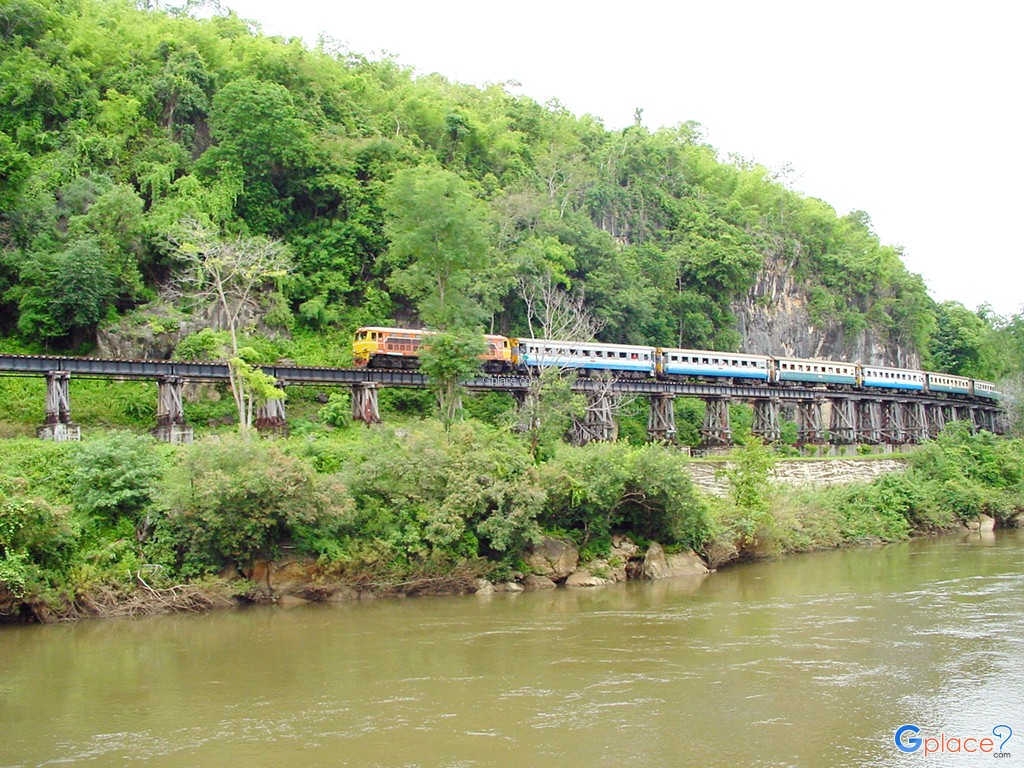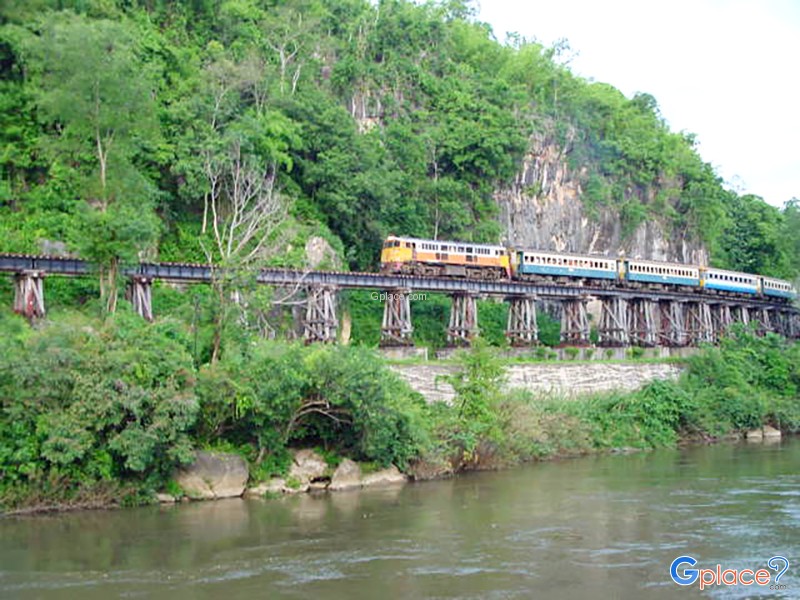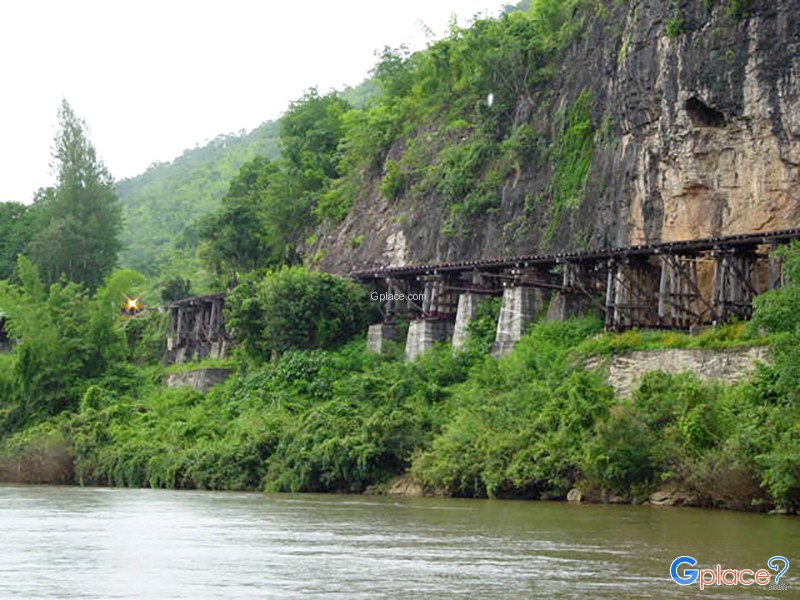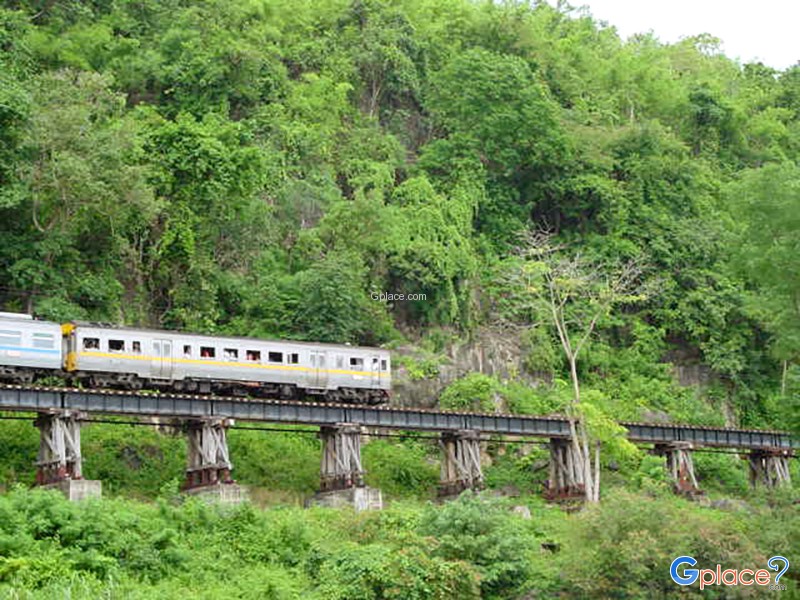“Death Railway in Kanchanaburi was built by prisoners of war during World War II in just one year and has been featured in many Thai and international films from past to present.”
Death Railway starts from Nong Pladuk Station in Ban Pong District, Ratchaburi Province, passes through Kanchanaburi Province, crossing the River Kwai Yai, heading west, passing the Three Pagodas Pass, and ending at Thanbyuzayat in Myanmar. This route was forged by Allied prisoners of war recruited by the Japanese military as a strategic railway through Myanmar. The landscape along the route is extremely scenic, especially around the Hellfire Pass area where the railway runs along steep cliffs overlooking the River Kwai Yai. Today, the line operates only as far as Ban Tha Sao or Nam Tok Station, covering approximately 77 kilometers from Kanchanaburi Station, about 55 kilometers from Kanchanaburi town via Highway 323 at kilometers 29–30.
The Death Railway was constructed during World War II after the Japanese government borrowed 4 million baht from the Thai government. Construction was completed within one year, from October 1942 to October 1943, to serve as a strategic route through Myanmar. After the war, some sections of the railway were dismantled, and parts remain submerged under the Vajiralongkorn Dam reservoir. The railway serves as a significant memorial to the wartime events.
The railway earned its name "Death Railway" due to the brutal conditions under which it was built. During World War II, the Japanese army conscripted about 61,700 Allied prisoners of war—including British, American, Australian, Dutch, and New Zealand soldiers—as well as thousands of laborers from China, Vietnam, Java, Malay, Thailand, Myanmar, and India. They were forced to build this strategic railway to transport weapons and troops for attacks into Myanmar and India, then British colonies. The section crossing the River Kwai Yai required building a bridge under harsh conditions. The construction was marked by hardship, disease, malnutrition, and cruelty, resulting in the death of tens of thousands of prisoners.
The railway was completed on October 25, 1943, and officially opened on December 25, 1943. After the war, the Thai government paid 50 million baht to purchase the railway from Britain. Today, the Death Railway stands as a global monument documenting the atrocities of World War II and honoring those who lost their lives.
The railway route offers breathtaking views, especially at Hellfire Pass where it clings to steep cliffs above the River Kwai Yai, creating iconic scenery. The Death Railway was also the filming location for famous movies such as The Bridge on the River Kwai, which helped spread the story and beauty of this route worldwide.
How to Get There
Visitors can board the Death Railway trains from Thonburi Station in Bangkok towards Nam Tok or Hellfire Pass in Kanchanaburi Province. Tickets must be purchased directly at the station as there is no online booking. It is recommended to arrive at least 30 minutes before departure to prepare and buy tickets.
Train Schedule (Approximate)
-
Train No. 257 (Outbound): Departs Thonburi Station at 7:45 AM, arrives Hellfire Pass around 11:30 AM, and Nam Tok Station around 12:00 PM
-
Train No. 259 (Return): Departs Nam Tok or Hellfire Pass at 1:55 PM, arrives Thonburi Station between 6:00–7:00 PM
-
Additional special trains operate on weekends and public holidays in the morning and afternoon
Travel Tips
-
Choose a window seat on the right side (facing Kanchanaburi) for the best river and cliff views
-
Bring a camera and water for the several-hour journey
-
Avoid traveling during the rainy season for safety and better photo conditions
-
Wear comfortable clothing; the train has no air conditioning, only fans
Admission Fee
- No entrance fee for the railway route, but train tickets cost about 100 baht per trip, depending on distance.
Opening Hours
- No fixed opening hours; train service operates according to daily schedule.


















